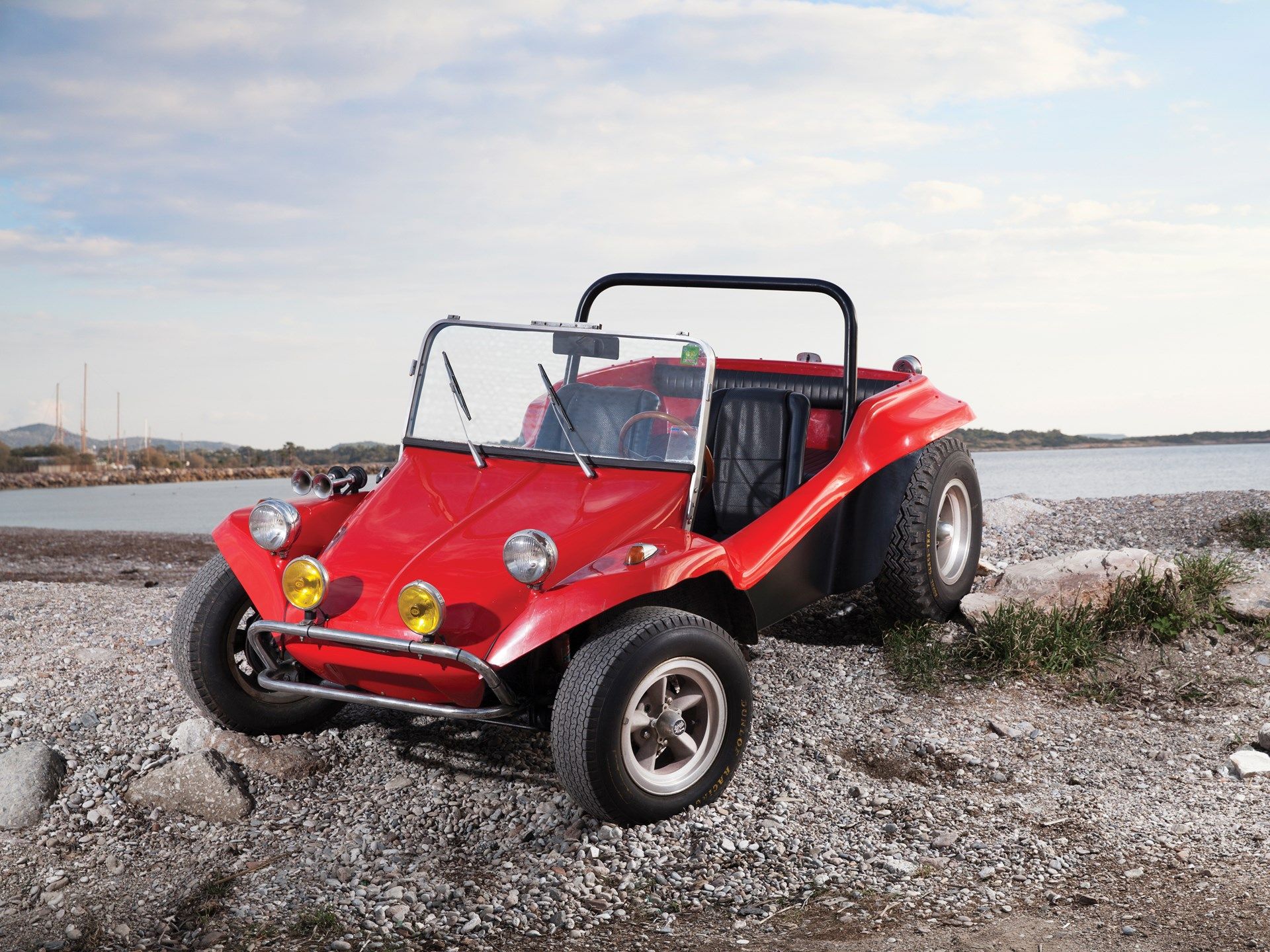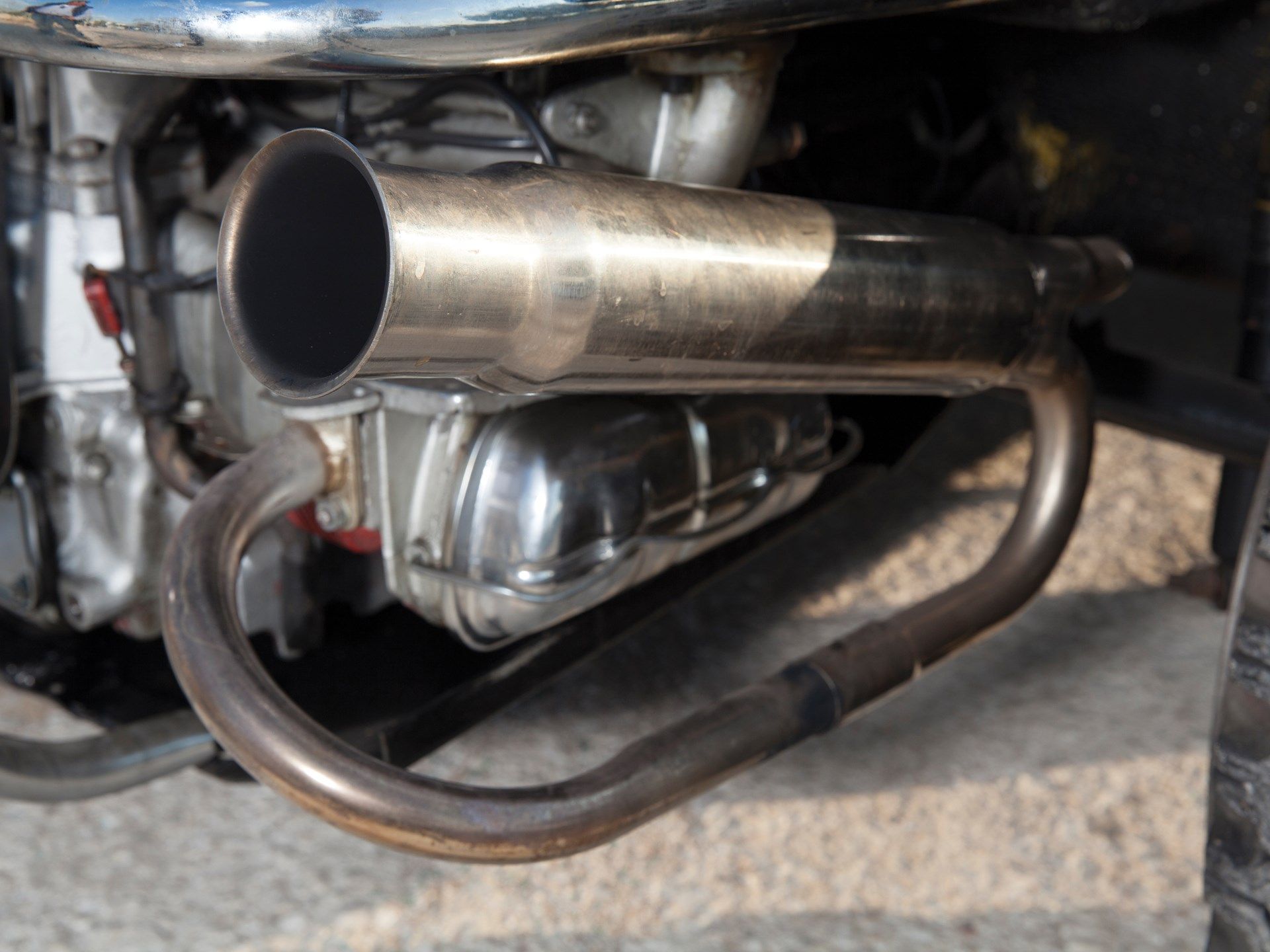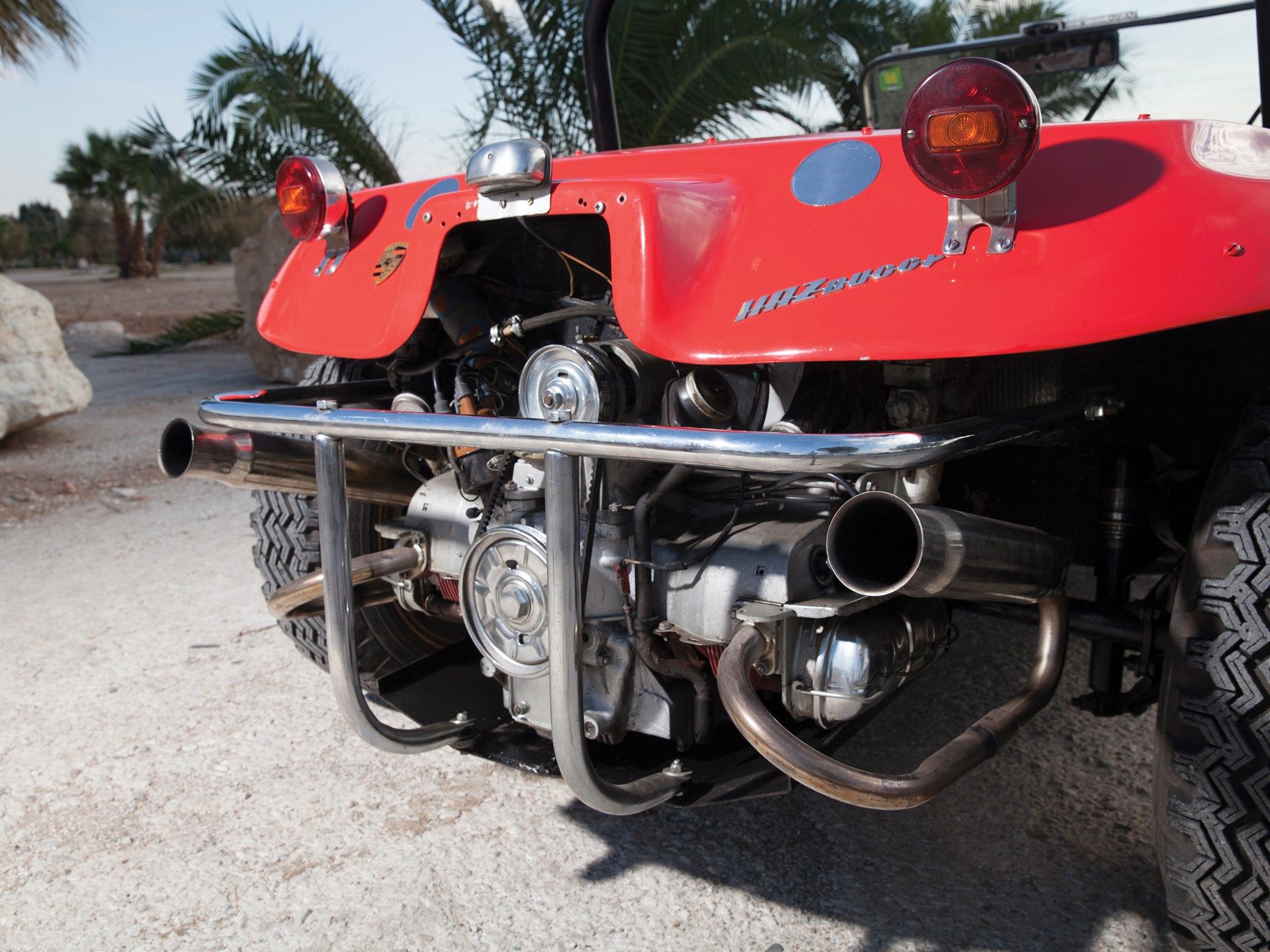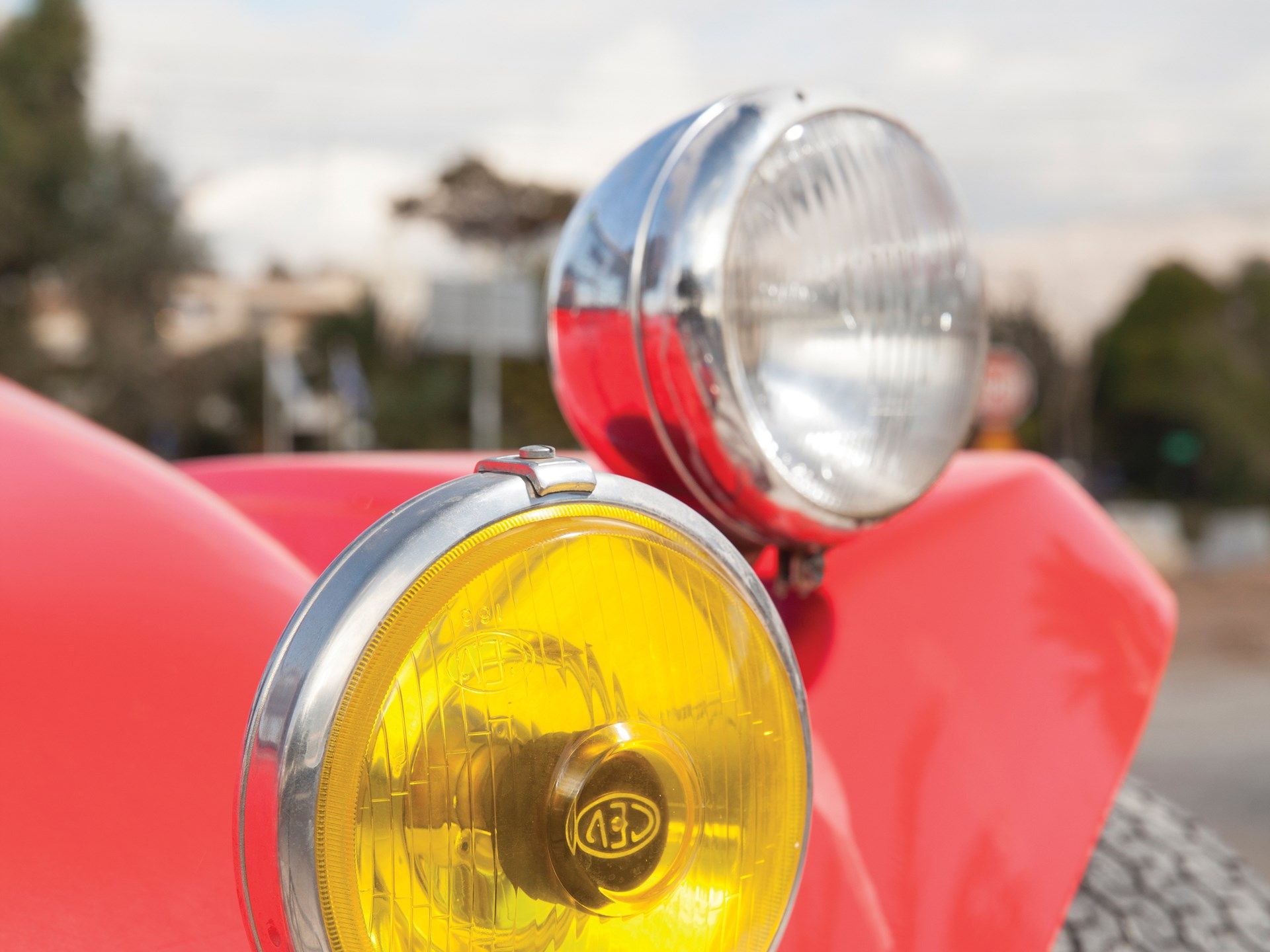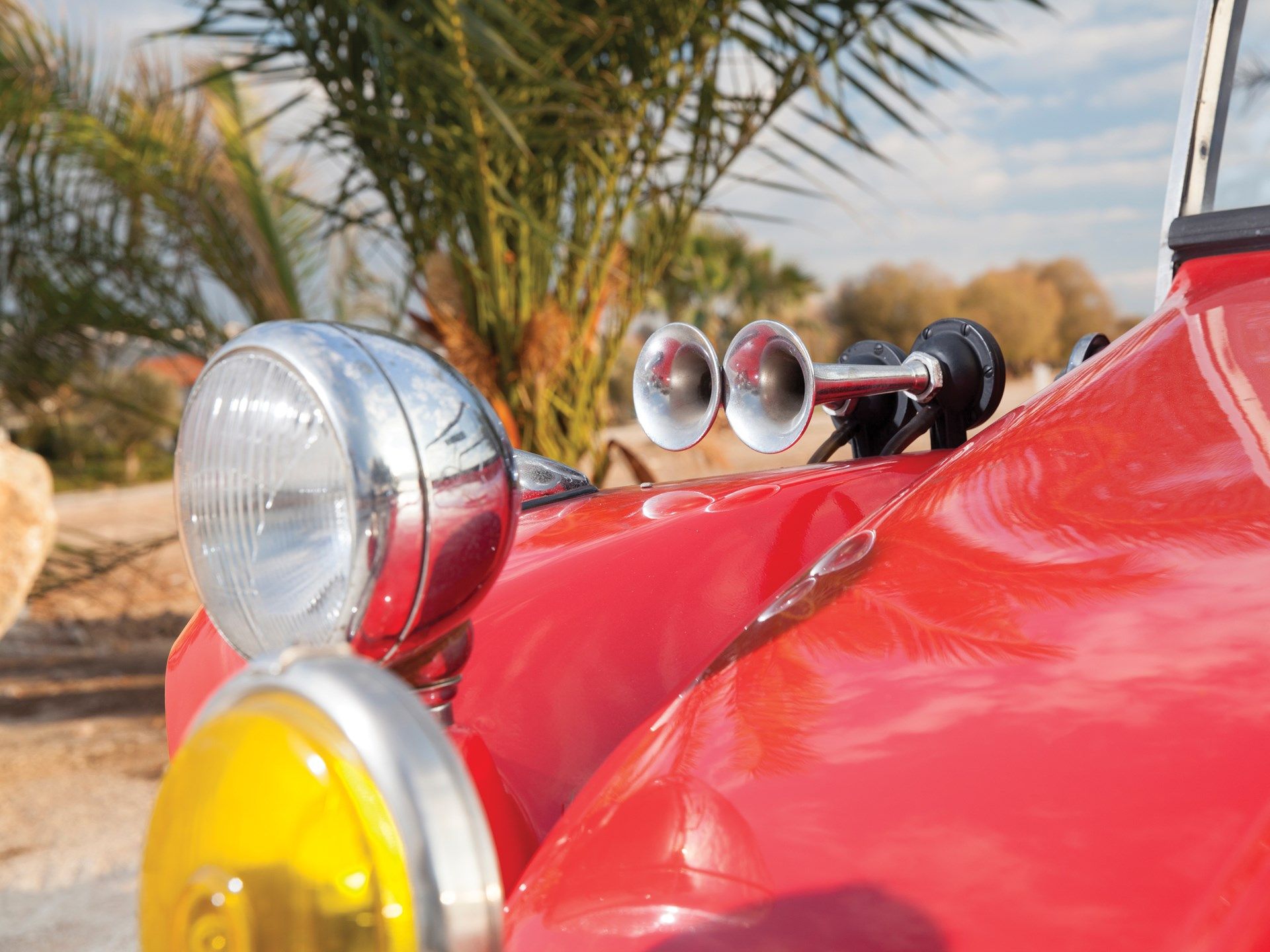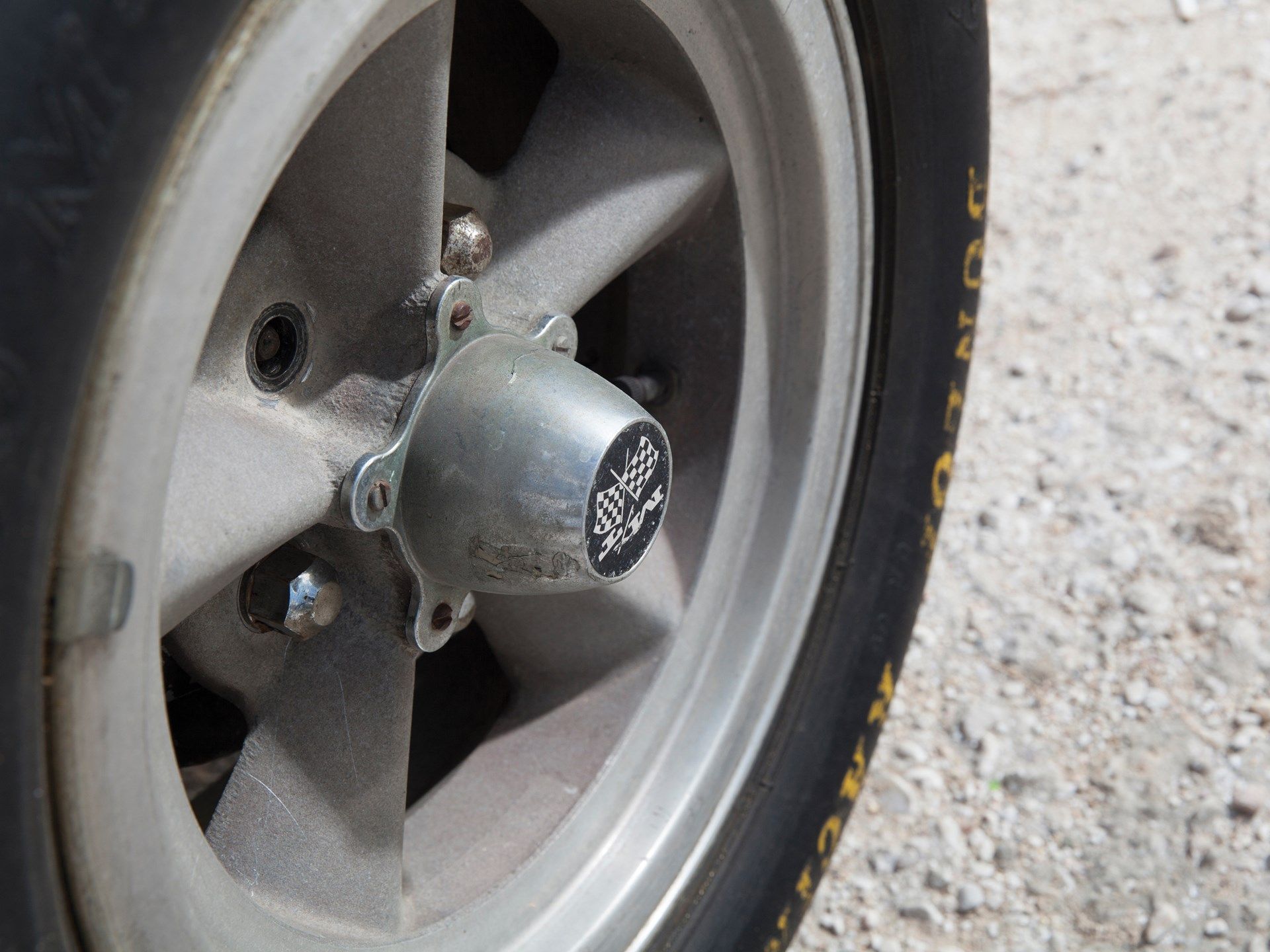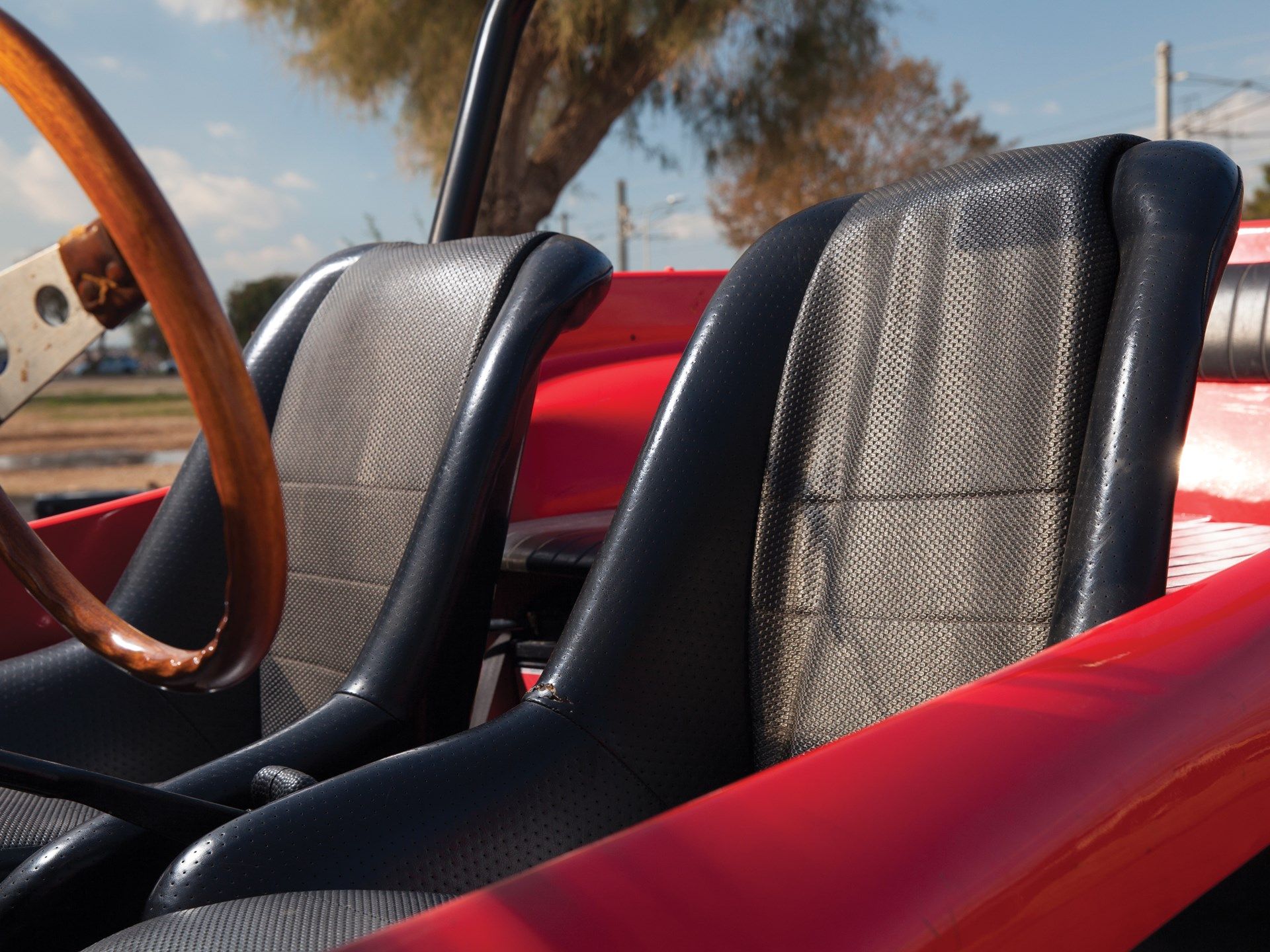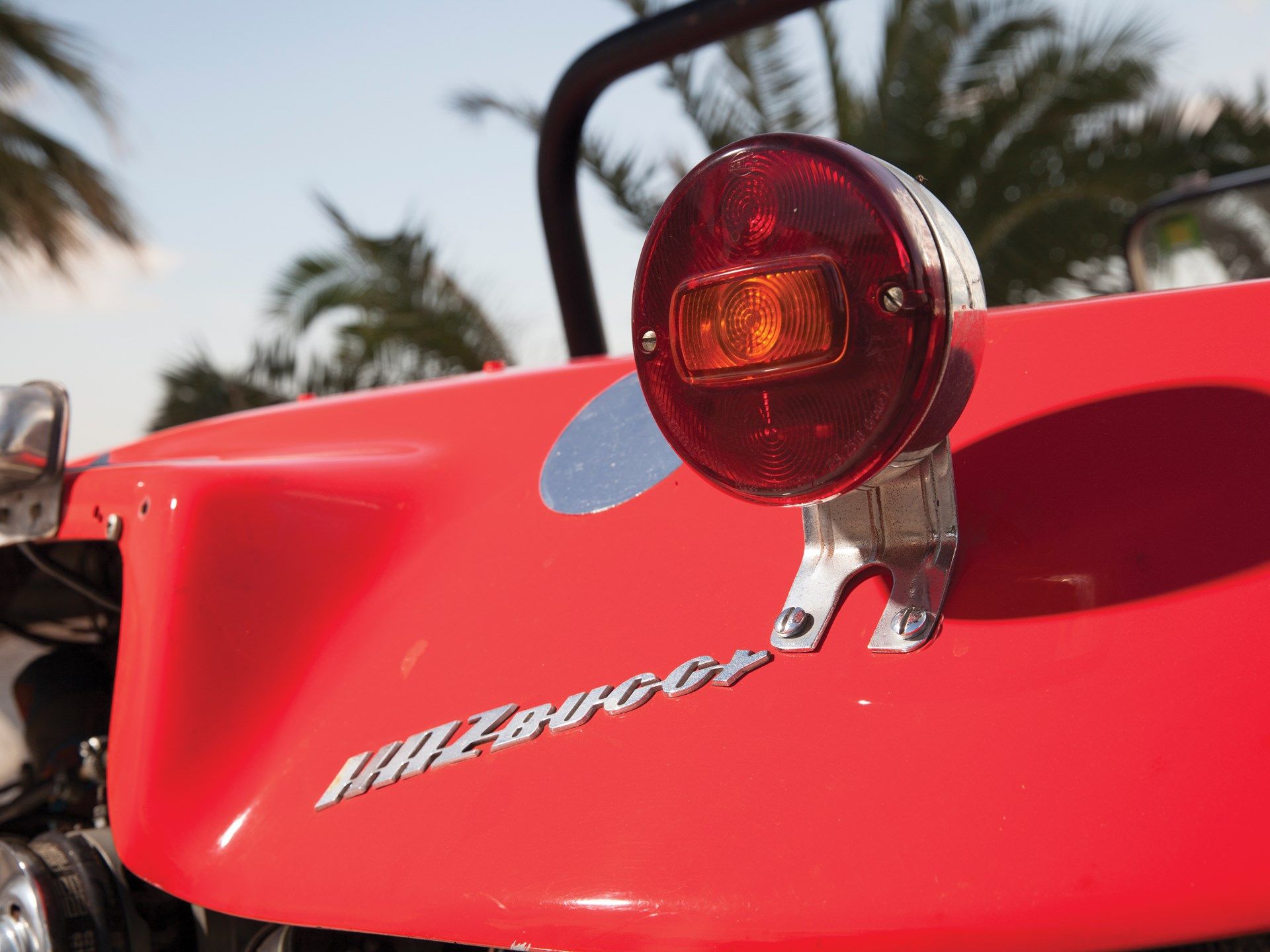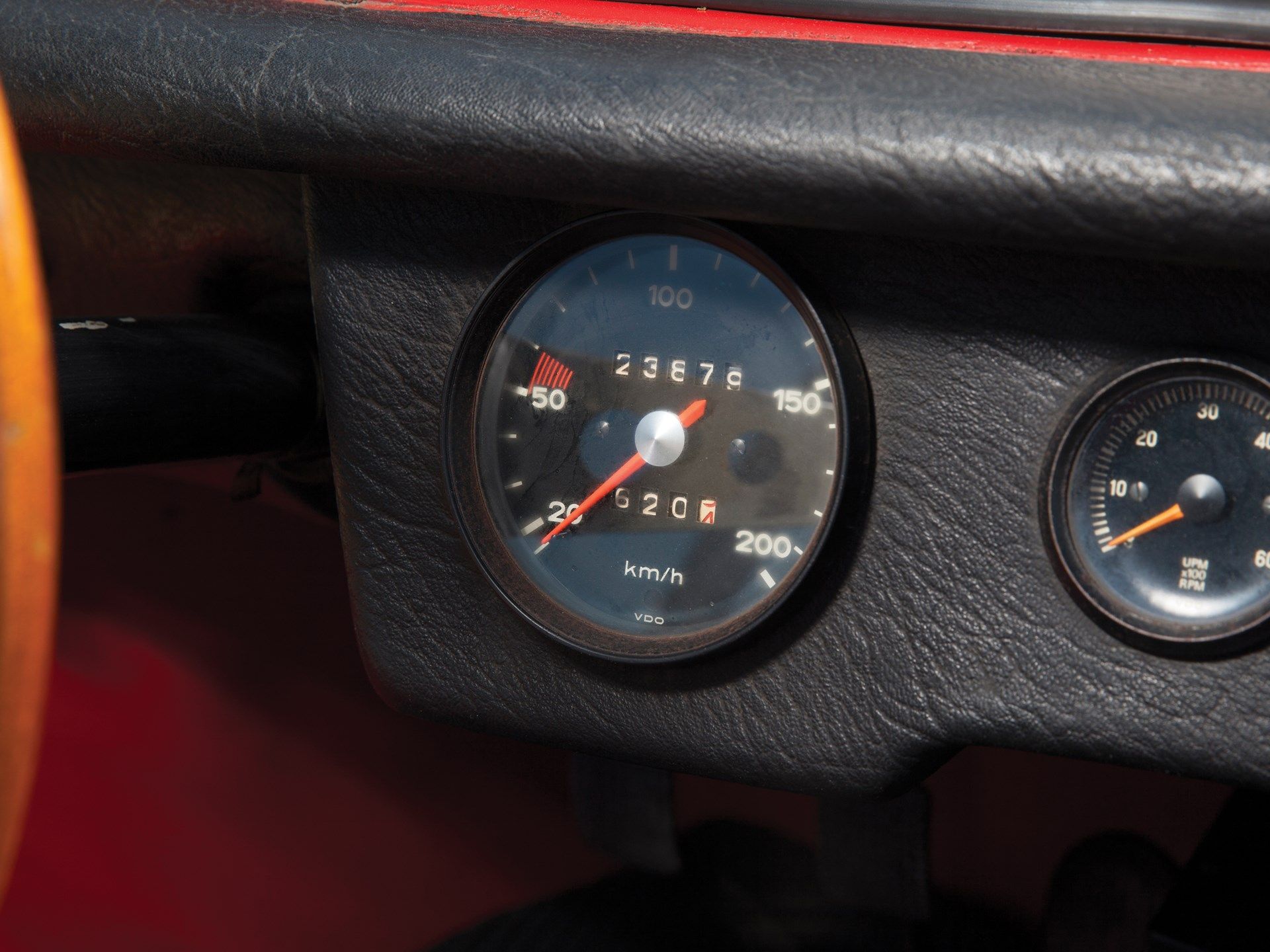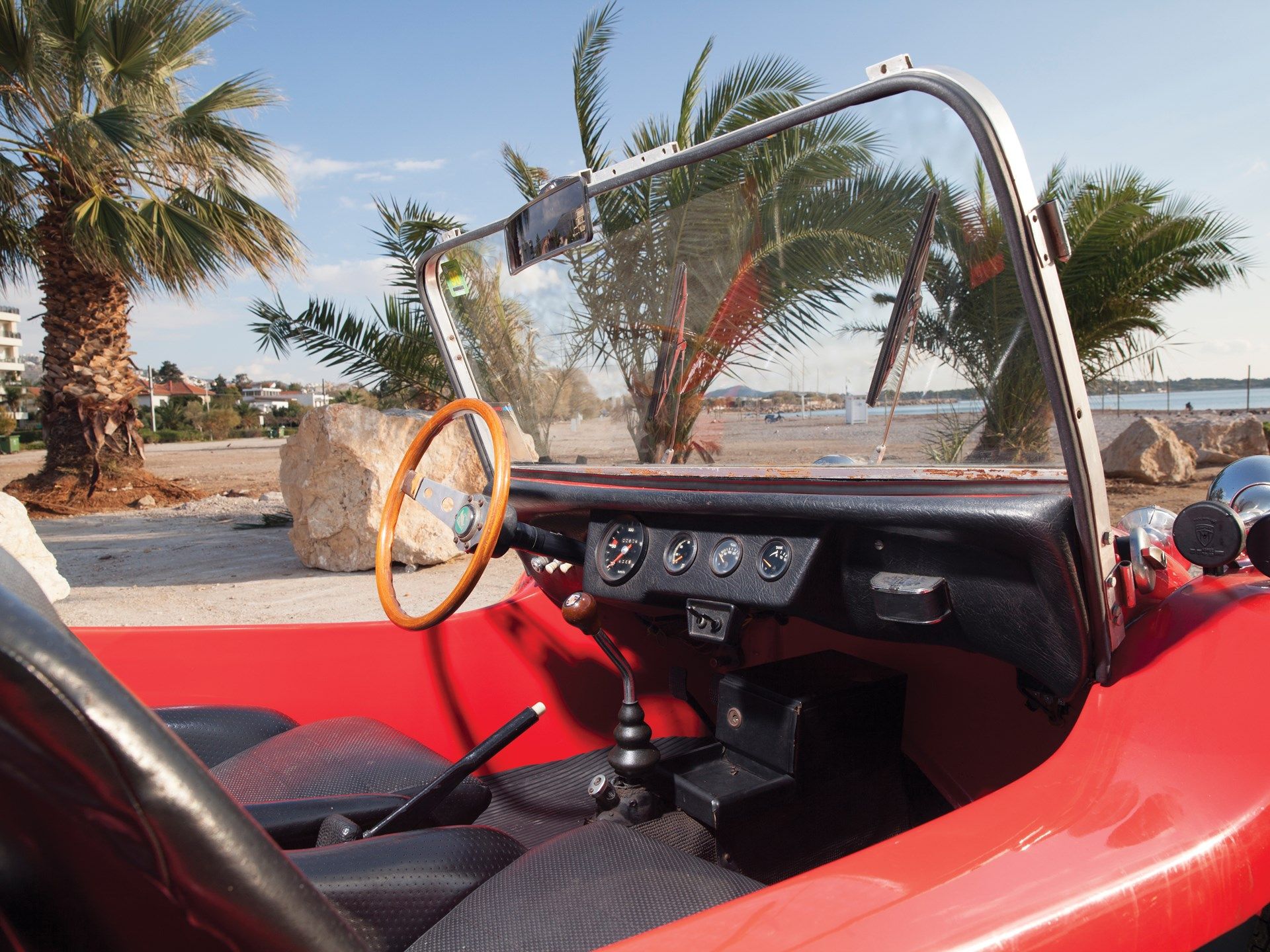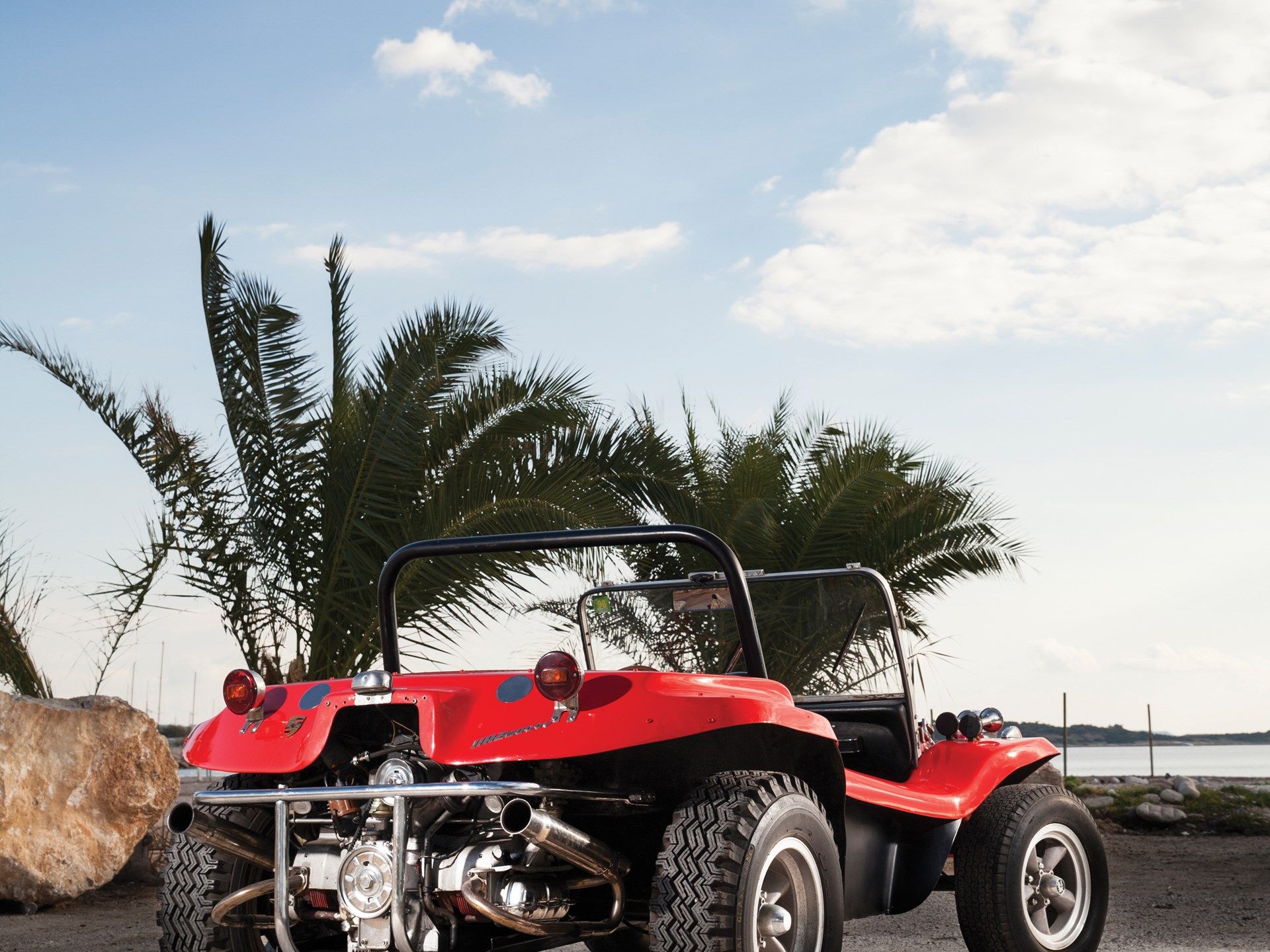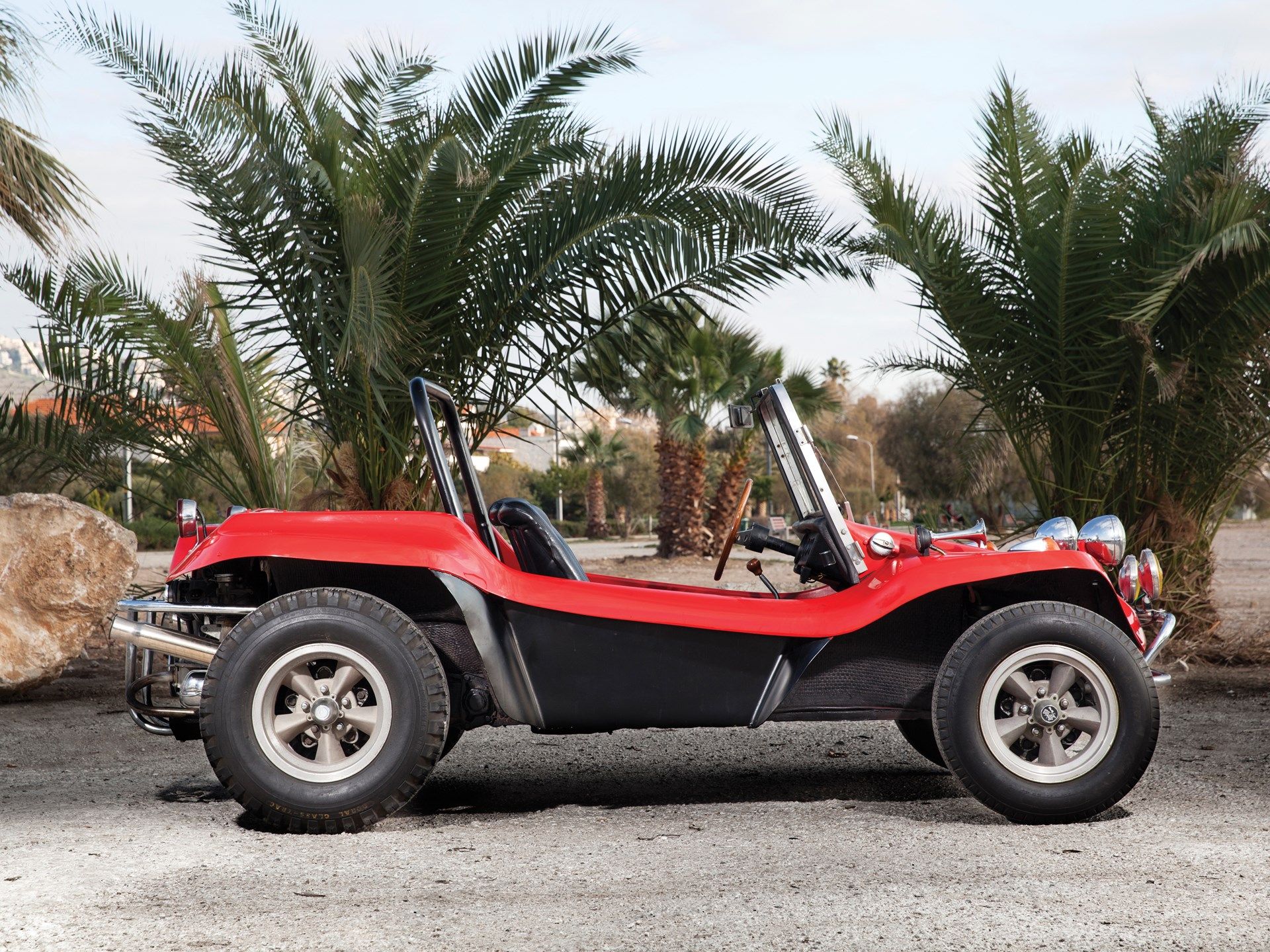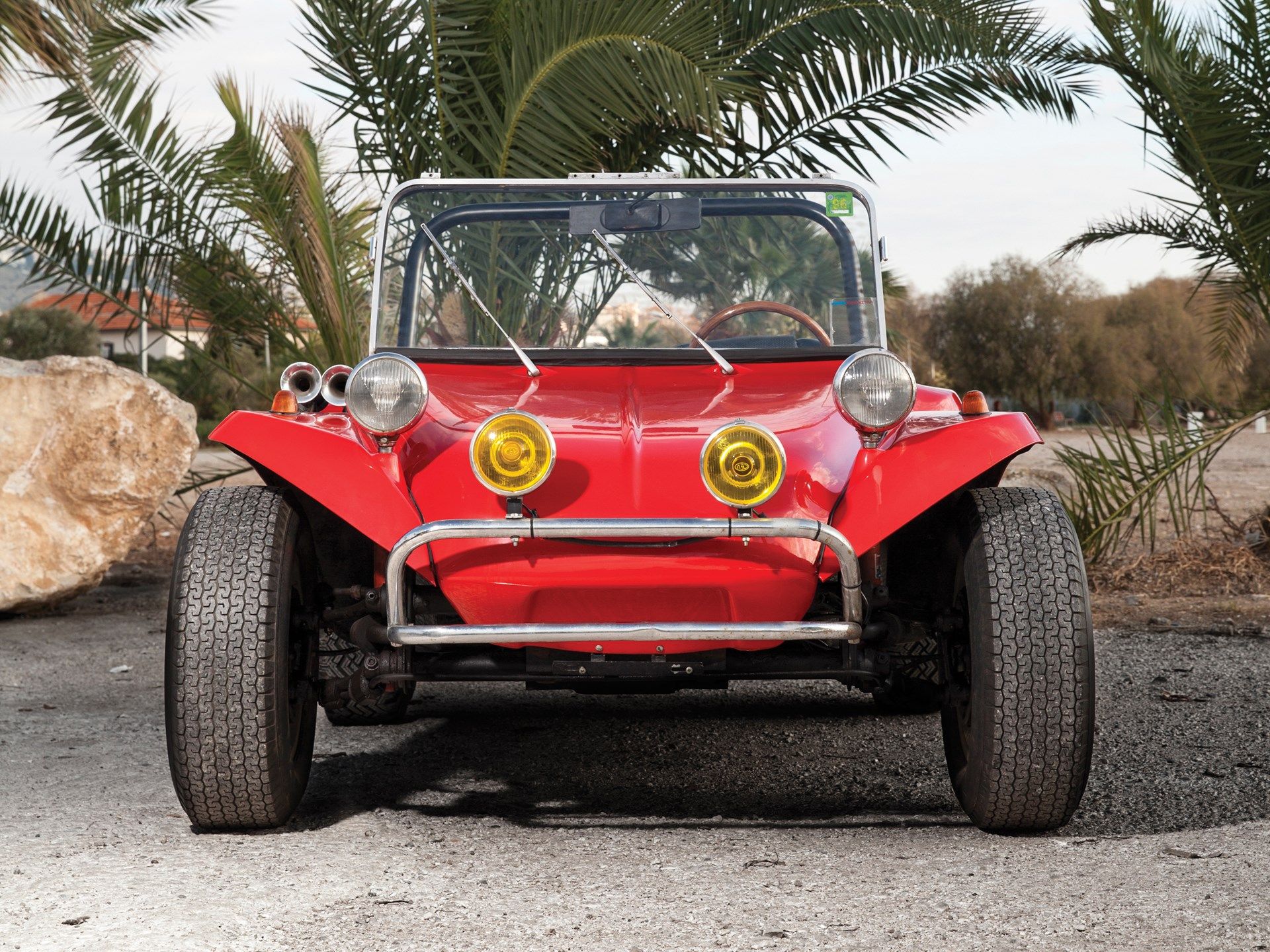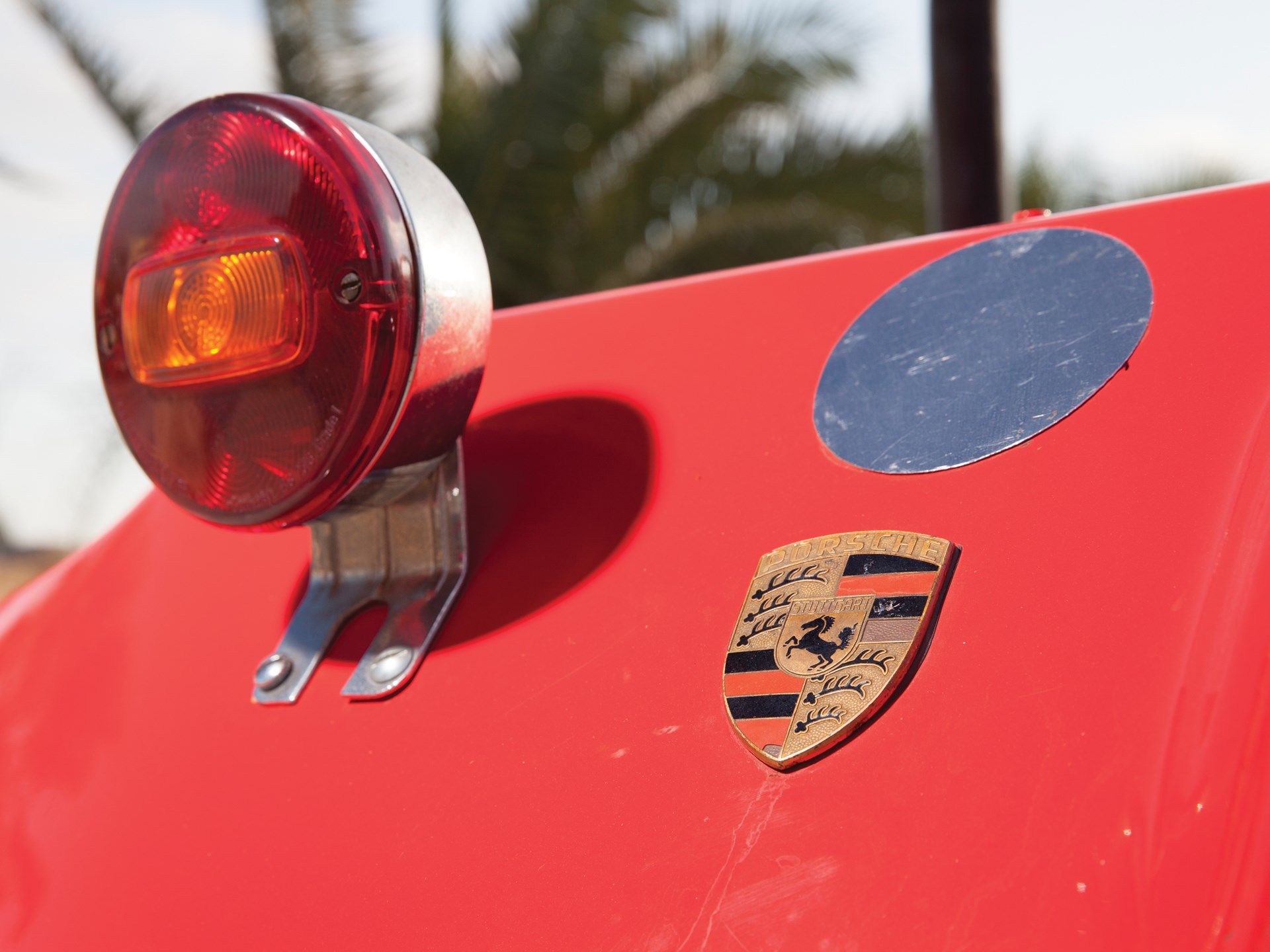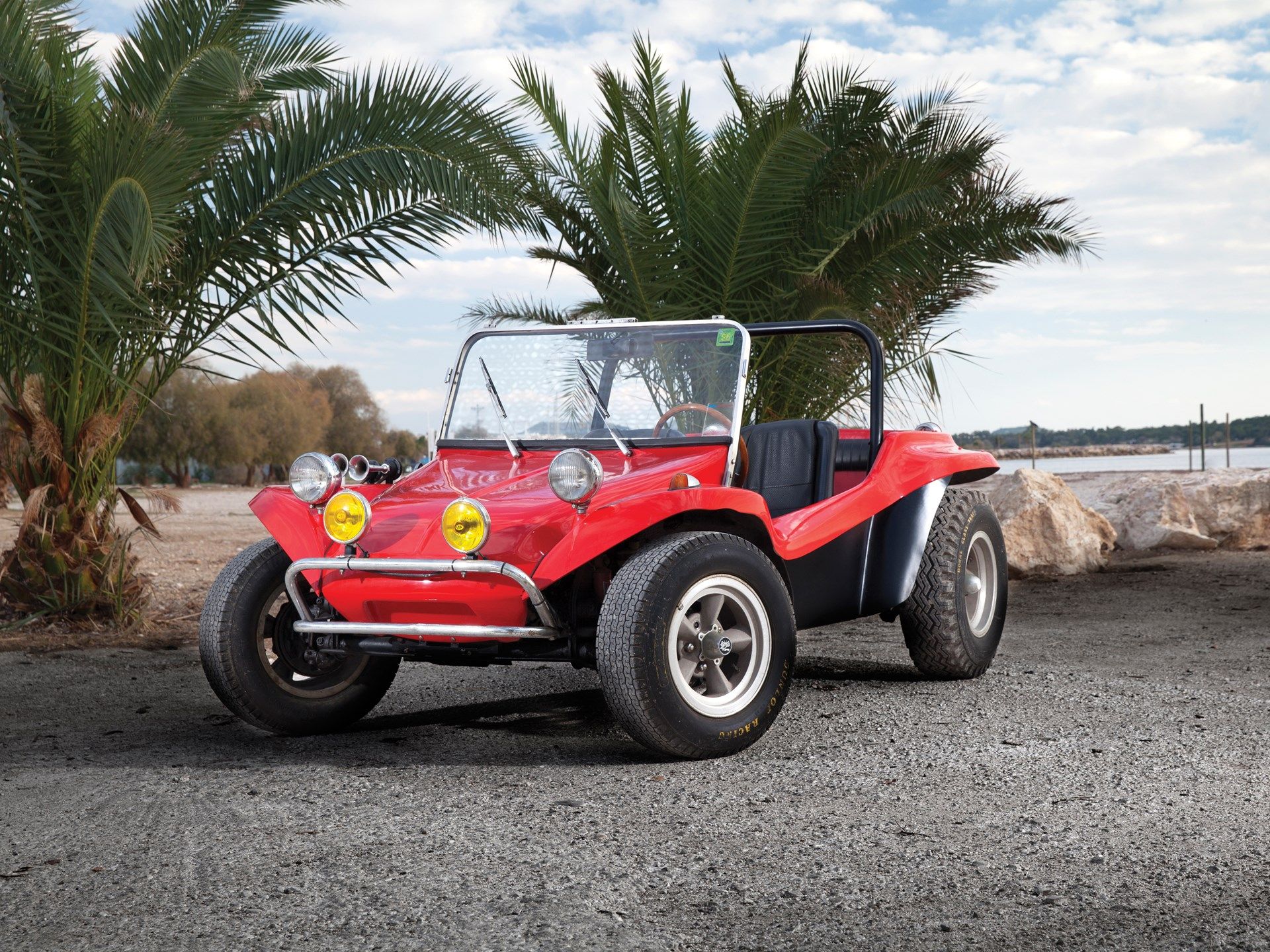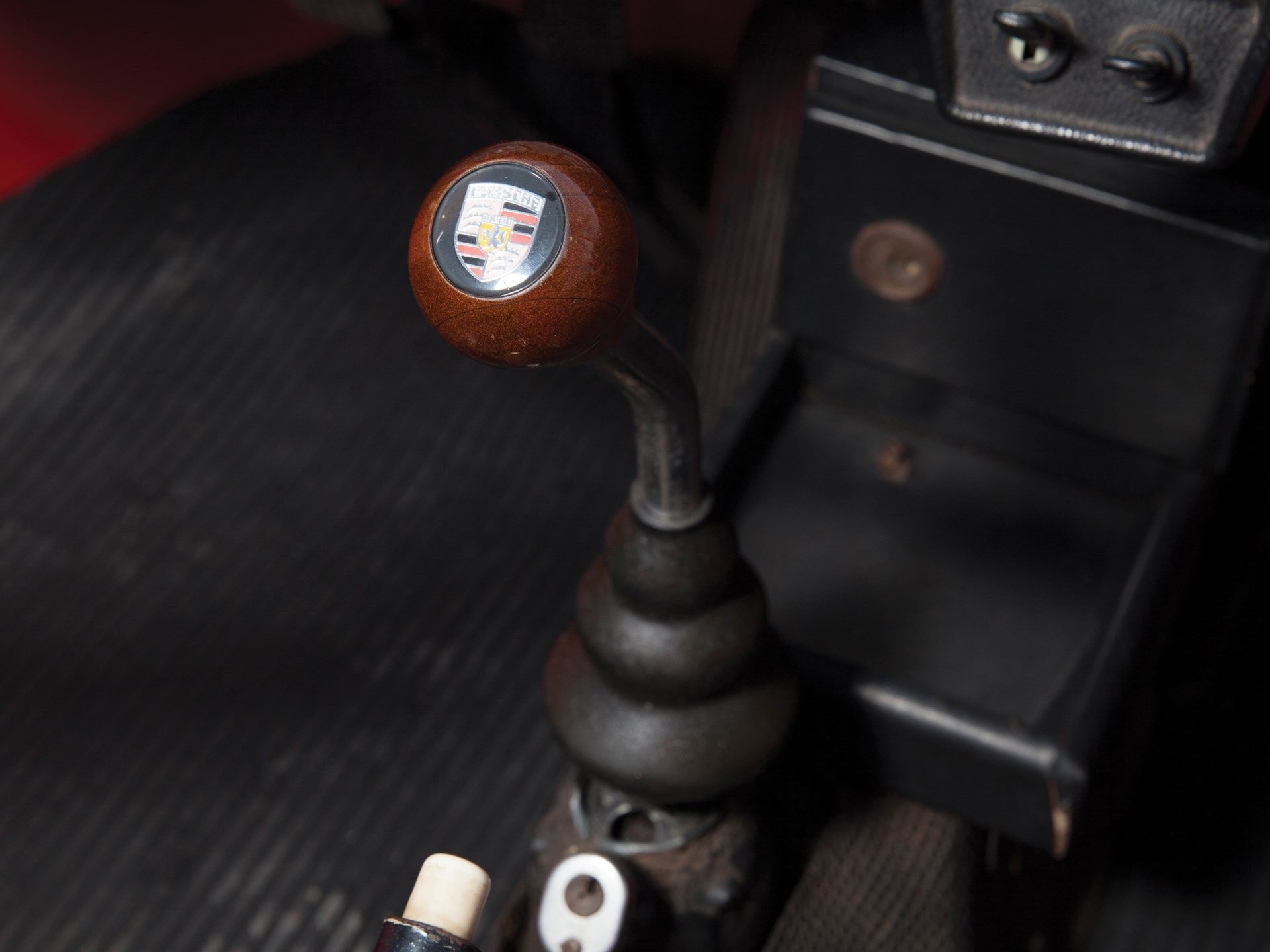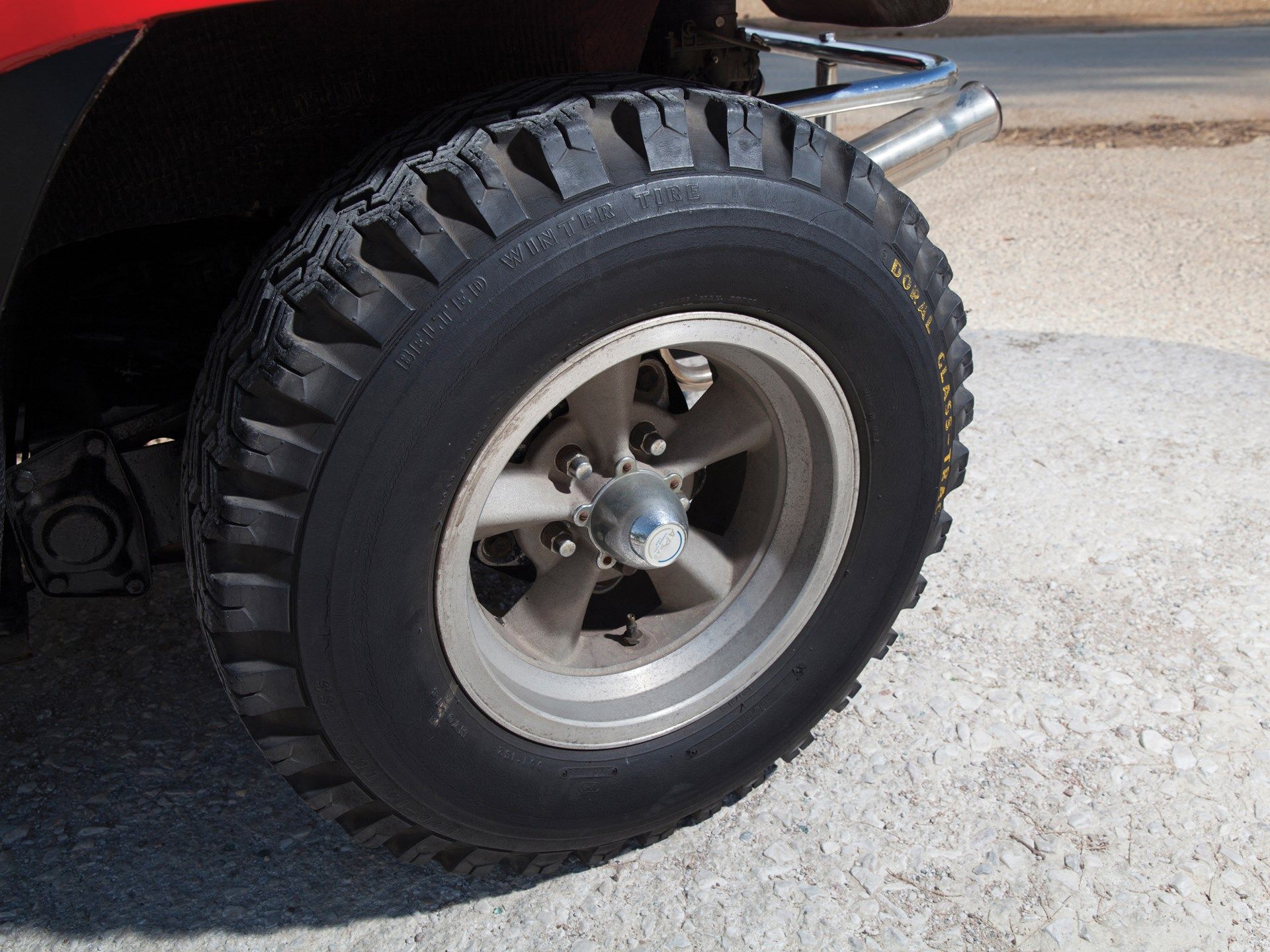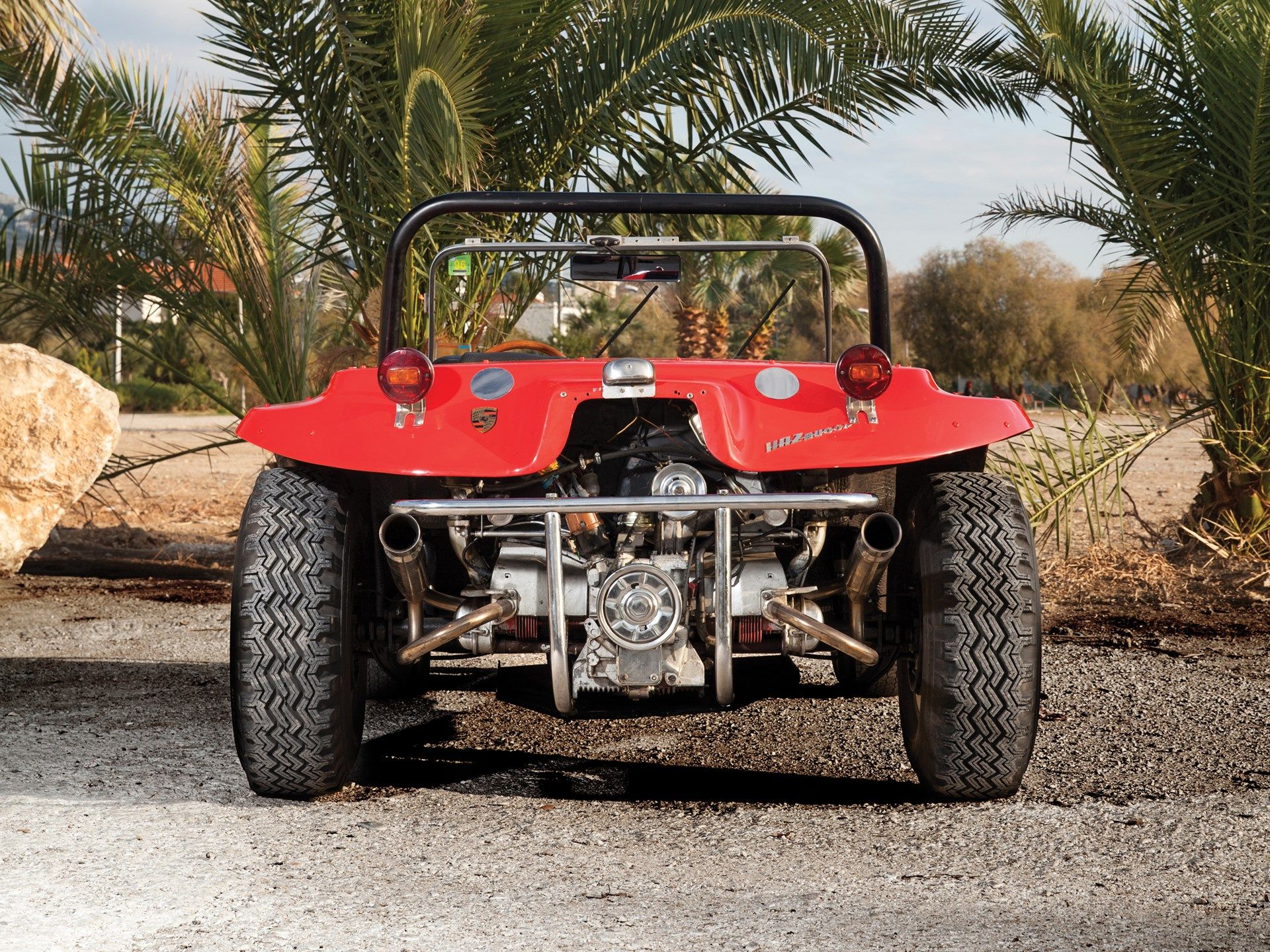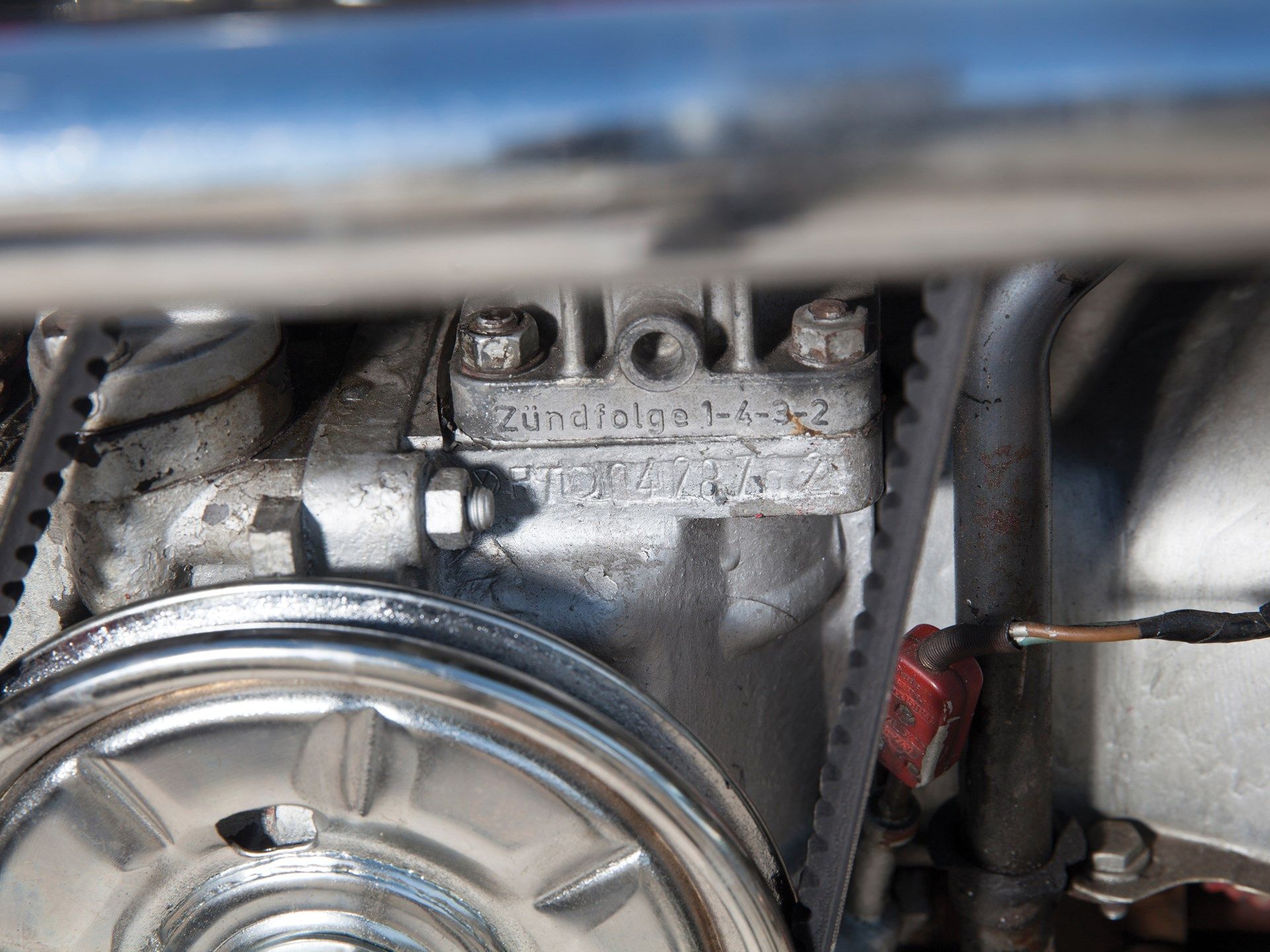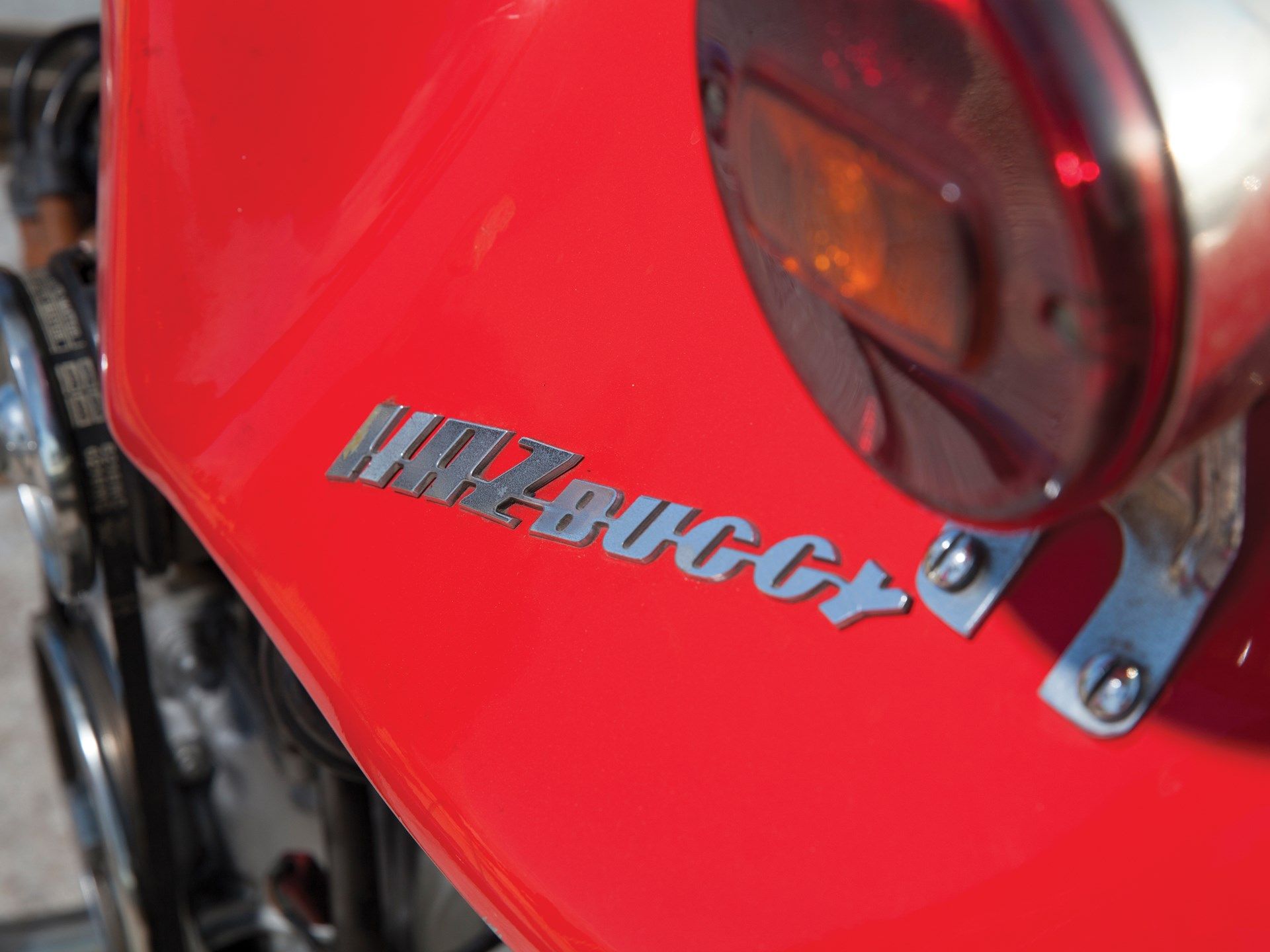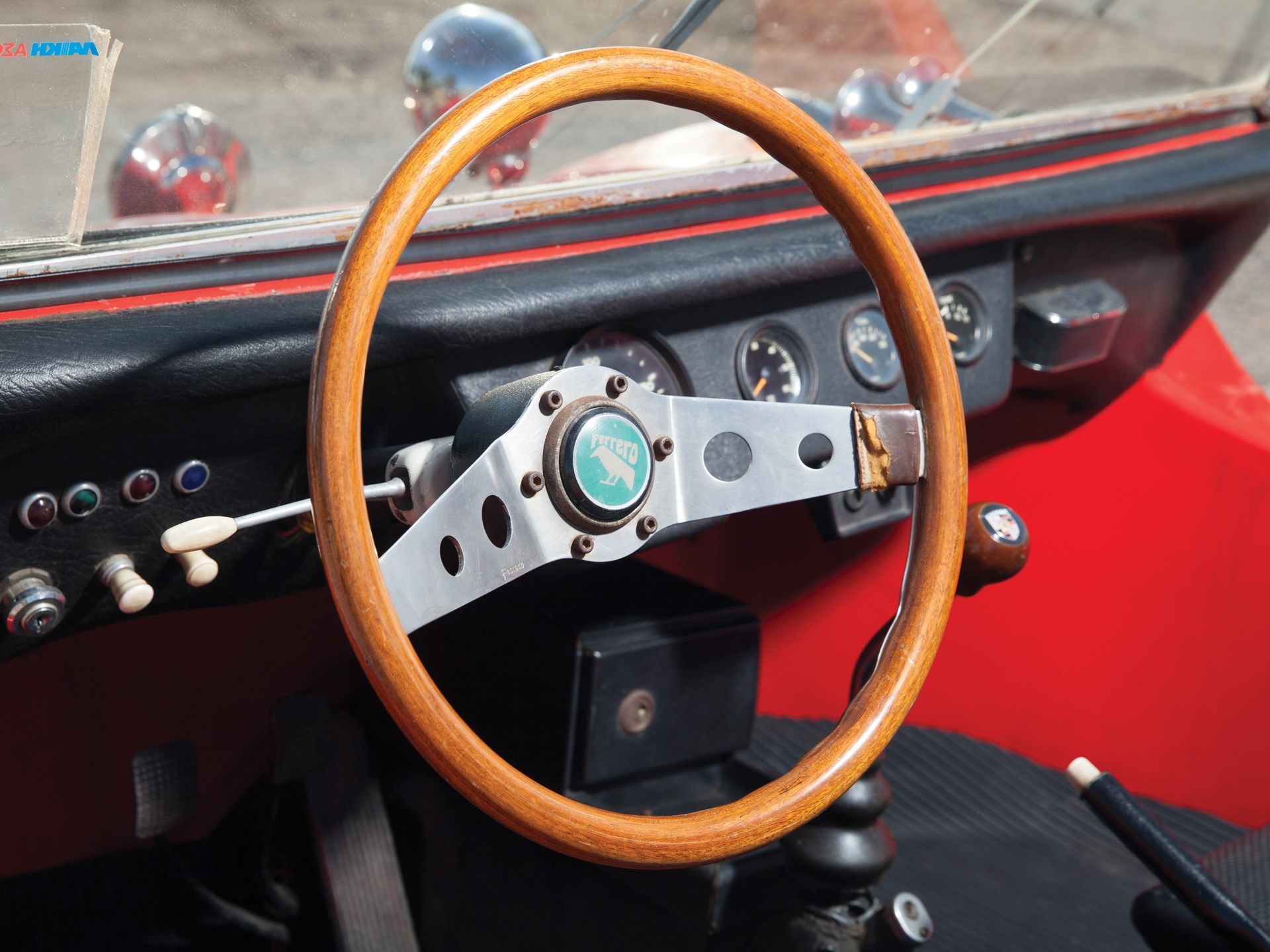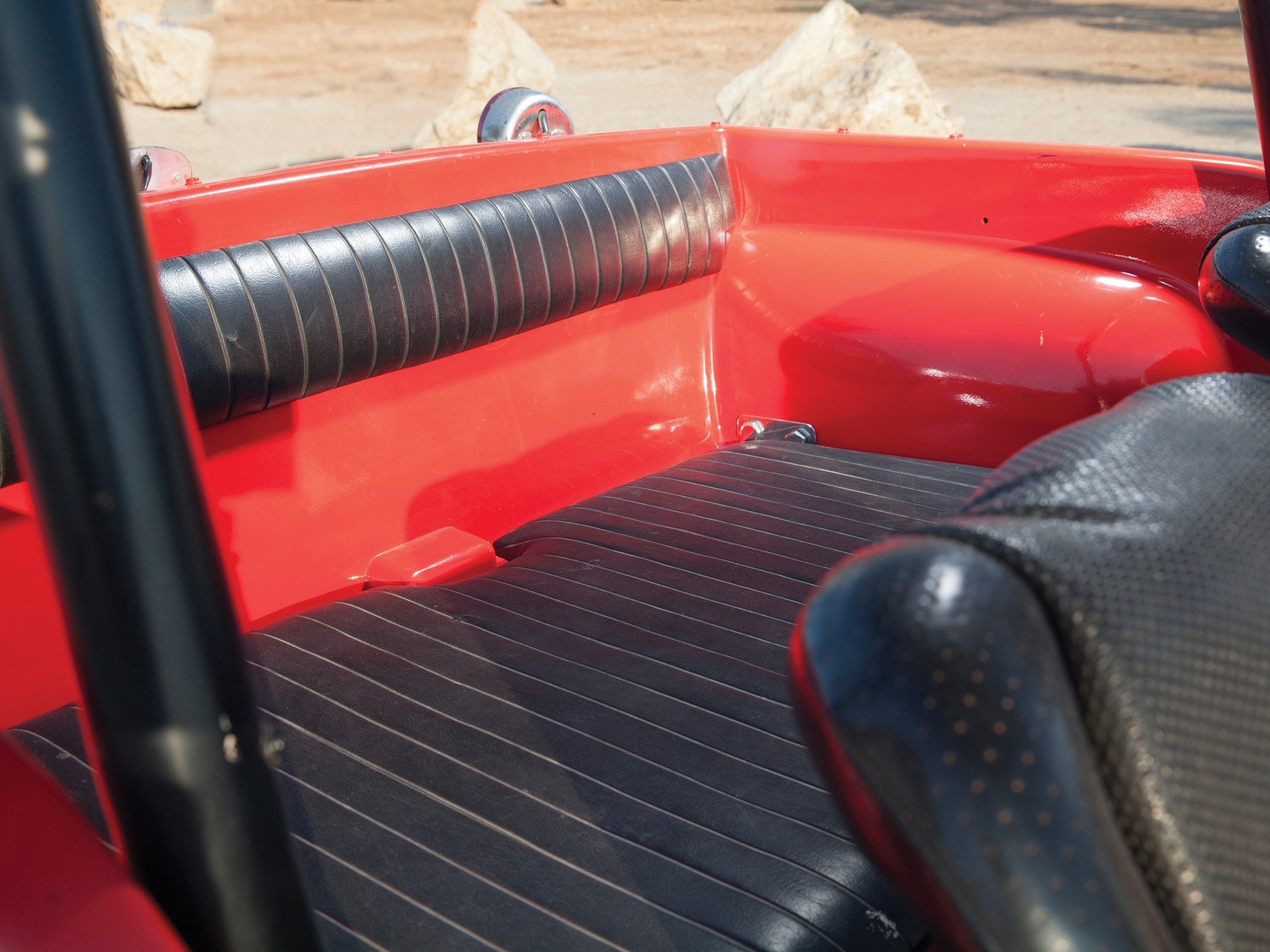The original Meyers Manx was one of the catalysts of the off-road craze of the mid-to-late-‘60s that led to the creation of the Baja 1,000 miles race. Its popularity was far-reaching, and the best-well-known European Beetle-based buggy was the HAZ.
The HAZ, short for Hazard, was built between 1968 and the early ‘90s by Autohaus G. Kühn in Germany. It featured the same VW Bug engine as its American brethren but had a sturdier frame since it had to pass TUV (German Technical Inspection Association) tests to be road worthy.
1969 HAZ Buggy
- Make: Array
- Model: 1969 HAZ Buggy
- [do not use] Vehicle Model: Array
1969 HAZ Buggy Exterior
The HAZ Buggy was the most fateful European recreation of the legendary Bruce Meyers-conceived Meyers Manx buggy. That means we can’t start talking about the HAZ Buggy without quickly delving into the sun-bathed history of the original.
B.F. Meyers & Co. went on to sell 5,280 Manx kits and, due to the huge demand, the Manx spawned many replicas and look-alikes with upwards of 300 companies selling Manx-esque buggies worldwide at one point.
But cheeky looks weren’t what saw the Manx sell like hot cakes. It was Meyers’ idea to make it lightweight, yet rugged, which appealed to customers. In fact, the same site points out that “the very first Meyers Manx, ‘Old Red’, driven by Bruce and Ted Mangels, beat the standing Tijuana to La Paz motorcycle record by over five hours, culminating in the first Baja off-road races. Meyers Manxes came in first overall and second in their class in the first official race, the Mexican 1000 in 1967.” The race evolved over time and morphed into what we’ve come to know today as the SCORE Baja 1000. The Meyers Manx also proved its worth at the Pikes Peak hill climb where it won its class.
The front end is dominated by the rounded bull-bar on which two yellow fog lights are mounted. The headlights are attached to the flared fenders. The central part of the front bodywork features a crease in the middle which echoes that on the front lid of a Beetle. Overall, the shape is less rounded compared to contemporary Manx models from the late ‘60s, as the car in the pictures is one of the earliest built by HAZ right at the peak of the buggy’s popularity.
The HAZ doesn’t have doors as it aims to be as minimalistic as possible. The fiberglass bodywork barely wraps itself around the off-road wheels with period-correct E-T Classic magnesium rims. You do get, though, huge ground clearance to be able to tackle some pretty daunting jumps and dunes in the desert.
The bodywork only partially covers the engine at the back and, as such, there are stainless-steel bars around the corners of the buggy. Circular VW-inspired taillights feel at home and complete the look.
An interesting detail is the horn sticking out on the right-hand side in a rather menacing way.
1969 HAZ Buggy Interior
The interior of the HAZ Buggy is simple and unsophisticated. You get two vinyl bucket seats up front with no head-rest and a bench seat in the back that’s not really usable unless you’re actually at the beach. It’s at least dangerous on the open road. Granted, many beaches nowadays don’t even allow cars to just roll by anymore but that’s a discussion for another day.
The elevated windshield and the black roll hoop should keep you safe if you roll over with the HAZ. Then again, the name of the car is Hazard so don’t think that’s some NCAP 5-star-level safety.
1969 HAZ Buggy Drivetrain
The HAZ comes with the OHV air-cooled horizontally-opposed 1.5-liter four-cylinder engine from the Beetle which is mated to a four-speed transmission.
It has torsion bar front suspension with trailing arms at the back. Happily, HAZ put brakes behind each of the four wheels of its buggy. The HAZ Buggy weighs in at roughly 1,250-1,400 pounds.
1969 HAZ Buggy Pricing
The price of a turn-key HAZ Buggy some 50 years ago was about $18,000 in today’s money. It may seem like a lot but the car was TUV-approved and, as a result, could be driven on the open road, not only off the beaten track. You could find kits for as little as $5,400 in today’s money.
Nowadays, HAZ buggies aren’t that hard to find in Europe, but an early example such as the one seen here is rare, especially in this good a state. That’s why this particular car sold for $64,460 during the RM/Sotheby’s sale in Monaco, two years ago. Newer models are much cheaper, obviously.
1969 HAZ Buggy Competition
Meyers Manx
You’ve got to pit any “replica” against the original which is, in this case, the Manx. The two are almost identical visually-speaking, and it’s hard to set them apart. I’m referring to a vintage Manx from the late-‘60s as Bruce, and the boys kept working on the concept and later showed up with Meyers Tow’d, the Manx SR (Street Roadster) or the Turista, a four-seater version.
Both come with the engine off a Volkswagen 1500 which was in production at the time and both have a manual. One could point out that the HAZ is actually sturdier due to stricter safety requirements in Germany at the time compared to the U.S.
Final Thoughts
The HAZ Buggy was one of the first European-built Meyers Manx-style replicas. It was built in Germany which means that the quality of the build isn’t as low as with other kits or finished cars. The car is as faithful to the Manx as possible without being a full-blown knock-off. It features some tiny visual changes like the crease on the hood or the slightly altered shape of the rear deck which make it stand out. It’s also bigger than Meyers’ original buggy, but it retains the two-wheel drive system.
This particular example is interesting due to its age and originality, having been cared for by the original owner until it was sold in Monaco in 2016. You’ll be hardpressed to find a better-looking period-correct HAZ Buggy in the wild that’s also red like Bruce’s original from 1964.
Further reading
Read our full review on the 2011 Volkswagen study buggy up!.

